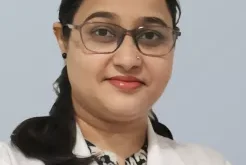Salivary gland cancers are rare malignancies that can affect individuals of all age groups. While they can occur at any stage of life, they are more frequently diagnosed in elderly patients. Salivary gland cancers are a diverse group of tumors originating in the salivary glands, which produce saliva to aid in digestion and maintain oral health. The most common type of salivary gland tumors occurs in parotid gland and are mostly benign. However most tumours in the minor salivary glands that are present in the palate, lips cheek and tongue are mostly malignant, with the most common being mucoepidermoid carcinoma, adenoid cystic carcinoma, and acinic cell carcinoma.
Clinical Presentation in the Elderly
Salivary gland cancers may present differently compared to younger individuals. Common signs and symptoms in this age group may include painless masses or swelling in the neck or mouth, which can be mistaken for
benign conditions such as salivary gland stones or infections. Other symptoms may include difficulty swallowing, changes in speech or voice quality, and facial nerve weakness.
Symptoms
Salivary gland cancers may present with a range of symptoms, and these can vary among individuals. Common symptoms may include:
1.Painless masses or swelling in the neck, mouth, or throat.
2Changes in facial appearance or asymmetry due to glandular enlargement.
3.Difficulty swallowing or a sensation of something stuck in the throat.
4.Changes in speech or voice quality, such as hoarseness.
5.Facial nerve weakness or paralysis, which can affect facial expressions and eyelid closure.
6.Fast growing lump on the palate
Causes
The exact cause of salivary gland cancers is not well understood, but several factors may contribute to their development, including:
Radiation exposure: Previous exposure to ionizing radiation, such as in the treatment of head and neck cancer, may increase the risk of salivary gland cancers.
Genetic factors: In some cases, there may be a genetic predisposition to salivary gland cancers, although this is relatively rare.
Occupational exposure: Certain occupational exposures, such as working with certain chemicals or substances, may be associated with an increased risk of developing these cancers.
Viral infections: While not definitively proven, some studies have suggested that certain viral infections may play a role in the development of salivary gland cancers.
Diagnosis and Staging
Diagnosing salivary gland cancers in the elderly can be challenging, as symptoms may be subtle and similar to other non-cancerous conditions. Diagnosis typically involves a combination of physical examination,
imaging studies (such as CT scans, MRI, and ultrasound), and biopsy to confirm the presence of cancer.
Staging is crucial to determine the extent of the disease and guide treatment decisions. In elderly patients, the stage of the cancer may influence the choice of therapy, considering their overall health and ability
to tolerate treatment.
Treatment Options
The treatment of salivary gland cancers is complex and often requires a multidisciplinary approach involving surgeons, radiation oncologists, and medical oncologists.
Although Surgery is the mainstay of treatment for salivary gland cancers, the choice of treatment depends on factors such as the type and stage of cancer, the patient’s overall health, and their preferences.
In elderly patients, the treatment approach may need to be tailored to their specific needs. Radiation therapy can be effective, but its side effects must be carefully considered, especially in elderly patients
with reduced functional reserve.
Challenges in Elderly Patients
Elderly patients face unique challenges when diagnosed with salivary gland cancer. These challenges include:
Age-related comorbidities: Elderly patients often have multiple medical conditions that can complicate treatment decisions and increase the risk of complications.
Tolerance to treatment: The elderly may have reduced tolerance to aggressive treatments such as chemotherapy or high-dose radiation, which can limit therapeutic options.
Support systems: Social and emotional support is crucial for any cancer patient, but it becomes even more important in the elderly population,as they may have fewer support systems in place.
Shared decision-making: It is vital to engage elderly patients in shared decision-making, considering their preferences and values when choosing treatment options.
Salivary gland cancers in elderly patients present a unique set of challenges, from diagnosis to treatment. A thorough evaluation, including staging and assessment of comorbidities, is essential in tailoring a
treatment plan that optimizes outcomes while minimizing potential complications. The involvement of a multidisciplinary team is crucial to address the complex needs of these patients, and open communication with the elderly population is key to providing them with the best possible care.
It is essential to remember that each patient is an individual, and a personalized approach is necessary when managing salivary gland cancers in the elderly. By understanding the specific needs and challenges faced
by this population, we can improve their quality of life and increase their chances of a successful outcome.
 Newspatrolling.com News cum Content Syndication Portal Online
Newspatrolling.com News cum Content Syndication Portal Online







